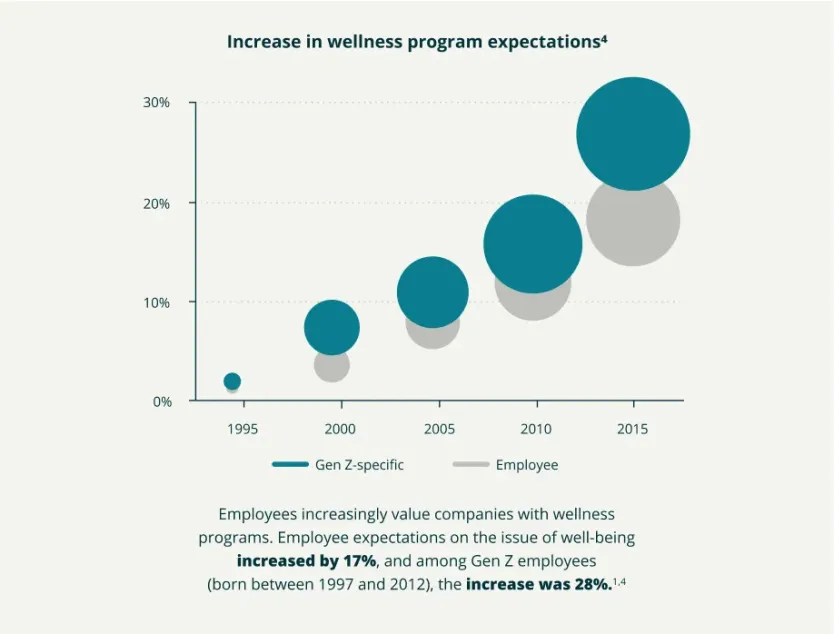

Wellness strategies for employee wellbeing
Meeting expectations in a world grappling with rising dengue cases
In the post-COVID era, employee expectations for workplace wellness programs have increased:
Employee wellbeing as a priority: Health benefits have become a key component of workplace satisfaction, with a 17% rise in demand for wellness programs.1
Employee retention and engagement: Wellness initiatives support employee retention while aiming to foster a safer, more inclusive work environment.2
Effective policies: Effective wellness practices can enhance employee health, safety and wellbeing, while also helping to boost morale, reduce turnover, lower healthcare costs, and improving service quality.3
With global health risks such as dengue on the rise, addressing health equity through corporate wellness programs could help demonstrate an organization’s commitment to sustainability, diversity, and social responsibility.

Enhancing workplace outcomes with dengue-control measures
Health-centered programs, including efforts to address emerging health challenges like dengue fever, may directly contribute to business success:
Health benefits: Preventive measures are estimated to account for over 70% of potential health gains, enhancing employee wellbeing and productivity.5,†
Community impact: Workplace initiatives can promote broader community health by curbing disease transmission.6
Cost savings: Wellness programs can deliver a return on investment (ROI) of $1.17 to $6.04 for every dollar spent*, while reducing healthcare and absenteeism costs by $3.27 and $2.73, respectively, per dollar spent.7,8
Investing in wellness programs, including measures to address the risk of dengue, is not just a health initiative—it is a strategic move to strengthen business resilience and support employee wellbeing.
* Results from a 2011 report by Health Fairs Direct which analyzed over 50 studies related to corporate and employee wellness.7
† Estimates from McKinsey Global Institute suggest over 70% of the health improvement potential from known interventions comes from environmental, social, and behavioral interventions, and preventive health measures. The remaining 30% of benefits come from proven therapies to treat existing health conditions. McKinsey Global Institute analyzed the impact of preventive interventions (including environmental, social, behavioral, and medical prevention) on health first, and apply therapeutic interventions only on the remaining disease burden not averted by preventive actions.5
